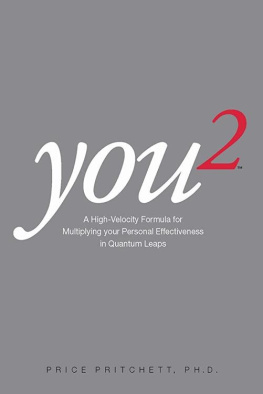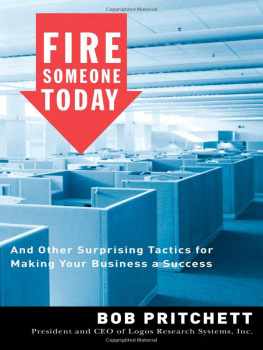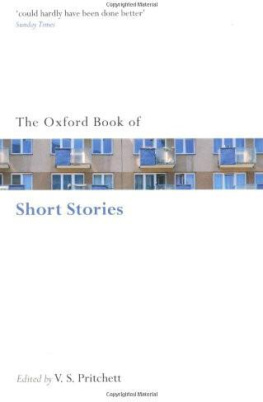Also by Laura Pritchett
FICTION
The Blue Hour
Red Lightning
Stars Go Blue
Sky Bridge
Hells Bottom, Colorado
NONFICTION
Great Colorado Bear Stories
AS EDITOR
Going Green: True Tales from Scavengers, Gleaners, and Dumpster Divers Home Land
Pulse of the River
MAKING FRIENDS
WITH DEATH

Copyright 2017 by Laura Pritchett.
All rights reserved. Except for brief passages quoted in newspaper, magazine, radio, television, or online reviews, no part of this book may be reproduced in any form or by any means, electronic or mechanical, including photocopying or recording, or by information storage or retrieval system, without permission in writing from the publisher.
Published in the United States by Viva Editions, an imprint of Start Midnight, LLC, 101 Hudson Street, Thirty-Seventh Floor, Suite 3705, Jersey City, NJ 07302.
Printed in the United States.
Cover art and design: Violet Tobacco
Illustrations: Leslie Patterson
Text design: Frank Wiedemann
First Edition.
10 9 8 7 6 5 4 3 2 1
Trade paper ISBN: 978-1-63228-059-6
E-book ISBN: 978-1-63228-060-2
Library of Congress Cataloging-in-Publication Data is available on file.
This book is dedicated to all us mere mortals, who must face down our debitum naturae, our debt to nature, and because we were born, must die. And to Eliana, Jake, and Kevin, who have made the journey a Very Grand Adventure.
INTRODUCTION:
DIGGING UP BODIES DOES THAT TO YOU
Of all the mindfulness meditations, that on death is supreme.
BUDDHA

Once upon a time, I dug up a skeleton. A real human skeleton with bright red hair and a smashed-in skull and little toe bones in his decaying woolen socks. That was the day, I suppose, that my death prep formally started. I was fourteen-ish at the time, and Id been sunbathing on the lawn of the family ranch in northern Colorado, browning my skin (thus perhaps unknowingly inviting death), probably reading a book, and certainly dreaming of boys, when my mother walked up and put a human skull in my hands. Right beneath my nose, its eye sockets gazing into mine.
I screamed and jumped up, as a person might do in such a situation. I looked at my mother, back to the skull, back to her, back to the skull, which is where my vision finally rested, because he was more interesting. It was a he all rightI could tell from the sheer size of the skull and the shape of the jaw. The back of his skull was caved in on one side but mostly I was taken by the hair, which was long and matted and bright red and all over the place, like a red-headed Medusa.
A red-headed Medusa ruining my sunbathing day.
I remember the closing of my throat. Squeezing my eyes shut. Saying something like, Holy moley, Mom! (We did not have Holy Shit! back then, or at least, that is not something I would have been allowed to say. Although when I replay this memory, Holy Shit! is what invariably comes to my mind.)
My mother was amused, delighted that she had, yes, surprised and horrified me, which has always been one of her main goals. Then she explained: This guy had been buried in the 1870s and shed just dug him up from the old pioneer cemetery that rested on the southern edge of our ranch. Who knows why. Perhaps shed gotten tired of digging up the old blue bottles, or old nails, or old railroad spikes from when there had been a quarry-train. Perhaps her menagerie of animals (peacocks, donkeys, goats, cats, chickens, a pet raccoon) were not enough to hold her attention. Perhaps her nine kids were not enough to amuse. Perhaps she just wanted to dig up a body. What she really said, to be honest, was that the ditch was flooding and that if she didnt move the body, hed float away down the ditch. I think her story is probably true, but one never knows what lies behind the green Zorba-like eyes of my mother.
I picked up the guys skull and held him in my hands. He had lots of teeth and lots of missing teeth. He had lots and lots of hair. There was a bit of gauze on his right temple, and yes, some dried blood in the hairline. The skull smelled weird.
She said something like, He was buried 130 years ago. Dont you think hes happy to be out?
I wasnt so sure about that. All I knew was that he was no longer resting in peace; instead, he was right there with me.
I was a teenager and a ranch kid and the daughter of this woman and thus prepared enough to be skeptical of this latest wacky moment. My life up to then had already been full of bizarre moments: I was used to dead animals of all sorts being dissected on the picnic table, pet chickens being served for dinner, dead rodents and snakes and canaries in the freezer. I was used to our dogs chewing up bloody deer legs on the front lawn, baby chicks and iguanas and parakeets and baby raccoons in the house. I was used to mountain lions killing animals and burying them nearby. I was used to peacocks honking outside my bedroom window, the squeaking of guinea pigs, the mewing of eyes-still-closed kittens. I was used to watching my parents suck the gunk out of the lungs of newborn calves, or cut the hides off of dead ones in order to help a foster-calf. I was used to seeing the plane wreckage that killed my moms first husband, which she kept in our first house. I was used to my six brothers terrorizing me and me screaming, Im going to kill you! Or them telling me the same. Or maybe Im exaggerating that last part, because many of my brothers were nicebut the rest is true.
Which is to say: I came from a chaotic, strange, ranch-y, farm-y, science-y family and was familiar enough with life and getting familiar with death. So when my mother placed a human skull in my hands, I said something like, Ah, ma. Maybe you went too far this time. Then I raised an eyebrow and waited for the rest of the story.
Her explanation was this: The cemetery was started in 1862, and in the 1890s an irrigation ditch was dug right next to the cemetery, and now a flood was causing the ditch banks to erode and a small sandstone marker with J. Thomas chiseled into it had just toppled over into the ditch. So we need to dig him up all the way and get him out of there, she said. She bounced from one foot to the other, with the skull back in her hands. Come see the rest of him!
I was an obedient kid, more or less. So I threw on some jeans and a T-shirt over my swimsuit and we walked through a pasture filled with cows and up a hill. Once in the cemetery, we walked through the lichen-encrusted tombstones mixed in with yucca plants and cacti and dead peoplehere were the lives lost to stillbirths, scarlet fever, whooping cough, typhoid, suicide. Over one hundred and forty people were buried here, all early settlers in the region. No one ever paid for a burial space, no one kept records, and no one was responsible for its care. Until my mother came along, that is. She started caring for itand making her teenage kids do so as well. She spent years researching and writing a book about this cemetery. She more or less figured out who everybody was and how theyd died and what happened to their ancestors. Not a morbid necrology, she wrote in her introduction, but a celebration of ordinary lives. Indeed, because of herand this was quite a gift to the community and to the familiesnone of the dead were just initials or letters any longer. Their barely visible, clumsily engraved names had new meaning; they had been somewhat resurrected.
Next page








